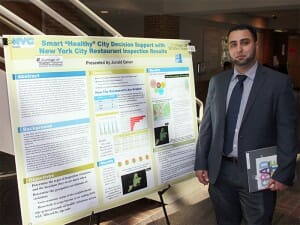CSI’s DPT Program Celebrates 100% Success Rate
August 18, 2016
The College of Staten Island (CSI) is proud to announce that this year all 20Clinical Doctorate in Physical Therapy(DPT) graduates passed the Physical Therapy license exam on their first attempt. This marks the first time in the history of the program, which is just under three decades old, that graduates have celebrated a 100% success rate.
“This achievement clearly reflects a team effort of having an outstanding group of dedicated, intelligent, and resourceful students, and now licensed graduates; committed and hard-working highly qualified faculty and staff; and an administratively supportive environment with adequate resources for teaching and research,” noted Dr. Jeffrey Rothman, former Chair of the Department of Physical Therapy.
“As the outgoing Founding Chair, this accomplishment is personally very gratifying. I wish the program faculty and staff, students, and graduates much continued success,” said Dr. Rothman, who stepped down as chair in July.
The Department’s new Chair, Dr. Zaghloul Ahmed, commented, “I am thrilled to lead such an impressive department and I look forward to helping to bring our next class of students to the same lofty achievements as has been accomplished by the Class of 2016.”
School of Health Sciences Dean Dr. Maureen Becker added that, “This is an incredible feat, like taking home an Olympic gold medal! Traditionally, the Physical Therapy license exam results have always been outstanding … bronze and silver medal-worthy … this year, it all came together. I am truly proud of our students, alumni, and faculty, both full-time and adjunct, whose ongoing assessment and improvement implementation has led to this phenomenal outcome.”
The graduates mean scale score was more than 35 points above the mean national scale score (717 to 683) and the passing rate was seven percentage points above the national percentage. The exam was administered nationally on July 19 and the official results were reported by the Federation for State Board Physical Therapy Examiners.
The Clinical Doctorate in Physical Therapy (DPT) program prepares students to become clinician-scientists who can competently apply research to clinical practice, perform all aspects of physical therapy practice, and perform clinical research. It will prepare graduates to examine, evaluate, diagnose, and intervene in the management of impairments, functional limitations, and disabilities of the cardiopulmonary, musculoskeletal, neuromuscular, and integumentary systems.
The program meets the changing national standards as well as community needs for physical therapists working in a multitude of settings. The DPT program is in accordance with the American Physical Therapy Association (APTA) recommendation that physical therapists be doctorally credentialed. The program is accredited by the Commission on Accreditation in Physical Therapy Education (CAPTE). Graduates will be eligible for the National Physical Therapy Examination.









